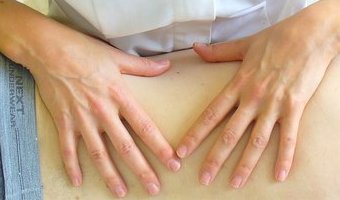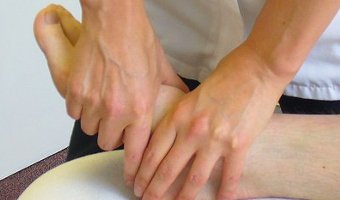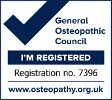Ankle, achilles & foot pain
The ankle and foot complex is a combination of interconnected small bones linked together by muscles, ligaments and fascia (similar to cling film which envelopes all the structures in the body) which together give stability, flexibility and strength for proper function. There are a number of conditions which commonly cause pain in the feet or ankles:
- Flat-footedness or pronation – this is when the medial or inner arch of the foot starts to flatten or collapse and the foot rolls over to the inner side (resulting in over-pronation). Often this is evident when the shoes wear out unevenly or on one side. Over-pronation can cause problems further up the chain, resulting in injury to the achilles tendon (at the back of the ankle), shin pain, knee pain and even, indirectly, hip and back pain. Symptoms include pain, swelling or a change in foot shape.
- Plantar-fasciitis – is when the fibrous tough fascia supporting the arches on the bottom of the foot, particularly between the ball and heel of the foot, become painful and inflammed. Symptoms often include sharp pain occurring predominantly under the heel or around the medial or inner arch of the foot and numbness, tingling or swelling in the same area. Aggravating factors include standing for long periods, especially when wearing non-supporting or poor footwear or when standing up having been inactive for a while. Occasionally a small spur of bone where the plantar fascia is pulling on the front of the heel which increases the symptoms causing more pain. Advice would be to freeze a bottle of water, cover it with kitchen roll or similar, put it on the ground and roll your foot over it for 5 – 10 minutes a couple of times a day or more. Also, go to the Osteopath to be treated and have calf exercises prescribed.
- Achilles tendonitis – The achilles tendon is a thick tendon continuing from the calf muscles down the back of the leg, behind the ankle and blending in with the plantar fascia and the heel bone (or calcaneus). It can be injured, strained and inflammed through sport, over-pronation (collapsed arches) and rarely can be painful due to some arthritic conditions.
- Metatarsalgia and morton’s neuroma – these conditions mostly relate to problems in the area of the ball of the foot, either as a result of bruising of the toe bones (particularly the 2nd and 3rd toes) or the nerves between the toes becoming irritated. Often these problems relate to over-pronation or dropped arches, a mobile mid-foot and/or callus build up between the toe bones. The area can become painful and swollen. Advice includes putting a foam pad under the ball of the foot to give some cushioning, have the Osteopath treat to improve overall foot and leg mechanics and prescribe exercises and arrange a biomechanical assessment with a podiatrist to have orthotics or insoles fitted as appropriate.
- Sprained ankle – can result due to a sudden twisting or ‘going over’ on the ankle joint. More often, the ligaments on the outer side of the ankle are injured and strained leading to bruising, swelling, pain and instability. An X-Ray may be required to ensure that the ankle is not broken. Rest, elevation and compression are usually advisable in the first 24 – 48 hours after injury.
- Gout – is intermittent and acute redness, swelling and pain, particularly around the big toes but it can be elsewhere in the foot or other joints. It results from a build up of uric acid in the blood that becomes deposited in the joints and starts an inflammatory process. Eventually gout can lead to arthritis of the foot.







